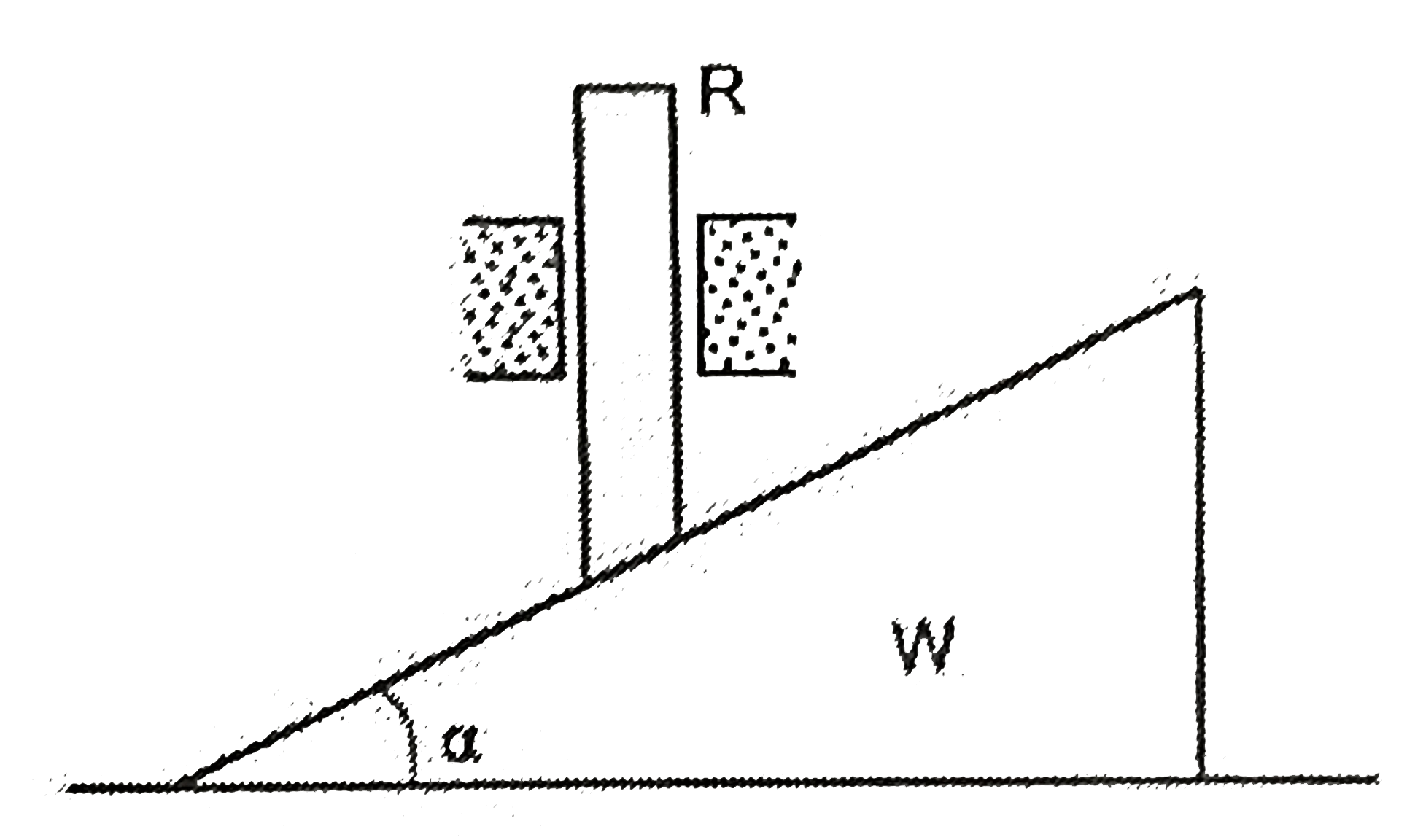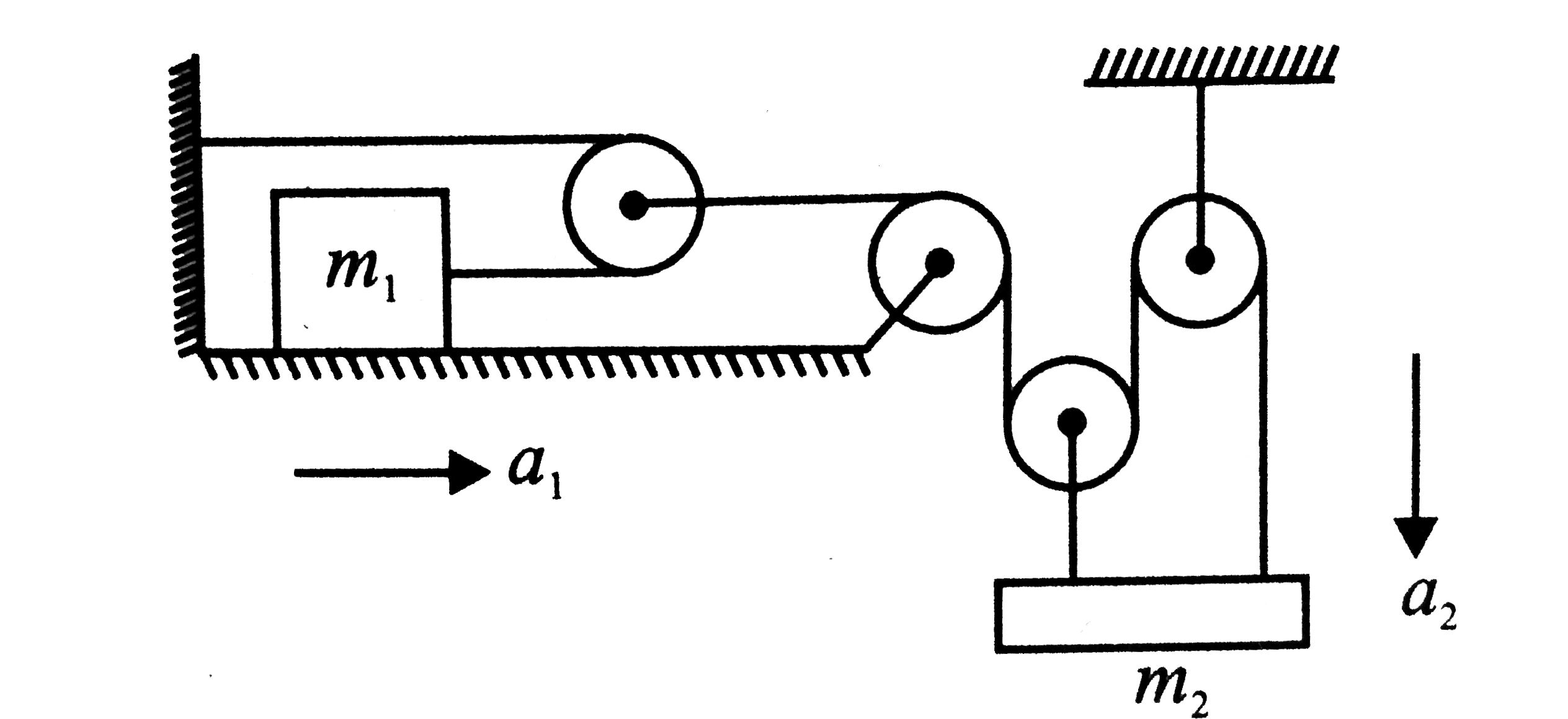
In the arrangement shown above, all surfaces are frictionless. The rod R is constrained to move vertically. The vertically acceleration of R is a1 and the horizontal accelration of the wedge W is a2. The ratio a1/a2 is equal to
A
tanα
B
cotα
C
sinα
D
cosα
Text Solution
The correct Answer is:A
|
Updated on:21/07/2023
Topper's Solved these Questions
- BOOK - D MUKHERJEECHAPTER - PRACTICE WORKSHEET 3EXERCISE - Assertion- Reason Type3videos
PRACTICE WORKSHEET 3
- BOOK - D MUKHERJEECHAPTER - PRACTICE WORKSHEET 3EXERCISE - Linked- Comprehension Type3videos
PRACTICE WORKSHEET 3
- BOOK - D MUKHERJEECHAPTER - PRACTICE WORKSHEET 2EXERCISE - Linked- Comprehension Type4videos
PRACTICE WORKSHEET 2
- BOOK - D MUKHERJEECHAPTER - PROPERTIES OF MATTER,FLUIDSEXERCISE - Type 235videos
PROPERTIES OF MATTER,FLUIDS
Similar Questions
Knowledge Check
- Question 1 - Select One
Let a1,a2,a3 be three positive numbers which are in geometric progression with common ratio r. The inequality a3>a2+2a1 holds true if r is equal to
A2B1.5C0.5D2.5 - Question 2 - Select One
Let a1,a2,a3, be three positive numbers which are G.P. with common ratio r. The inequality a3>a2+2a1 do not holds if r is equal to
A2B1.5C0.5D2.5 - Question 3 - Select One
A pulley-block arrangement is shown in the adjacent figure, if acceleration of m1,m2 and m3 are a1,a2 and a3 respectively, then relation between a1,a2 and a3 is ( All string and pulleys are ideal . )
 Aa2−a3+10a1=0Ba3−a2+10a1=0Ca2−2a3+10a1=0D2a2+a3+5a1=0
Aa2−a3+10a1=0Ba3−a2+10a1=0Ca2−2a3+10a1=0D2a2+a3+5a1=0
Let a1,a2,a3, be three positive numbers which are G.P. with common ratio r. The inequality a3>a2+2a1 do not holds if r is equal to
View SolutionIf a1,a2,a3,.... are in G.P. with common ratio as r2 then loga1,loga2,loga3,.... will be in
View SolutionIf a1,a2,a3,a4,a5 are in HP, then a1a2+a2a3+a3a4+a4a5 is equal to
View SolutionA pulley-block arrangement is shown in the adjacent figure, if acceleration of m1,m2 and m3 are a1,a2 and a3 respectively, then relation between a1,a2 and a3 is ( All string and pulleys are ideal . )
 View Solution
View Solution. If a1,a2,a3,...,a2n+1 are in AP then (a2n+1+a1)+(a2n+a2)+...+(an+2+an) is equal to
View Solution


